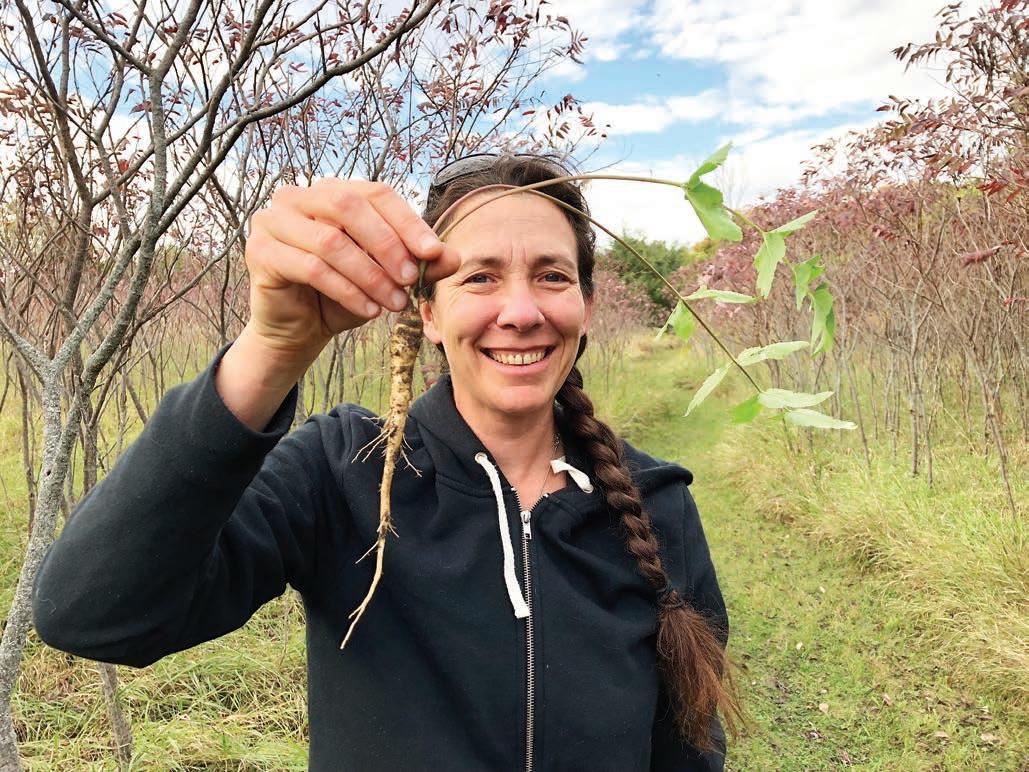
7 minute read
NORTON
FROM PAGE 10
Chief

When depositors rush to get their money out of a bank that is nancially in trouble, it is called a “run” on the bank. ese are not new and have occurred at di erent levels of severity in the past, the worst in the 1930s during the Great Depression. At that time, there was contagion across many banks, not our current situation. While bank insolvency can often come on the heels of the Federal Reserve Board raising interest rates, that is not solely the cause, according to Mariner Wealth Advisors ey may also use Treasuries to back up deposits. When the Fed raises interest rates, and the value of those Treasury bonds declines, bankers may need to sell at a loss to cover withdrawals. Once this spiral starts, or collateral is devalued due to bad loans, depositors may demand their money causing a run on the bank.
Many banks issue loans on real estate or other business collateral.





Fed Chairman Jerome Powell remained concerned about in ation when he testi ed before Congress in March. is drove interest rate expectations higher after several interest rate hikes over the last three ey may also avoid banks that have not had proper risk management or oversight. ese things created a perfect storm scenario for SVB. It may be wise to stay with large institutions commonly known as “too big to fail” due to their backing by the Fed. Large banks may actually benet from depositors moving money to them from small banks in amounts sion, grace, awesomeness, courage, hope, or any other positive, encouraging, and a rming word.
It was very fortunate that a contagion was avoided, as the U.S. government response was swift and e ective. Once the facts were released and average depositors realized they were not involved in a bank that does high-risk lending, some of the pressures eased.
Investors will likely review their portfolio to make sure they are not invested in small banks in the venture capital space or have heavy exposure to commercial real estate.
Jimmy Stewart as George Bailey in “It’s a Wonderful Life” was able to instill trust in his customers to survive a run on his bank during the Great Depression. In real life during that time, the Emergency Banking Act of 1933 formed the Federal Deposit Insurance known as FDIC. ese days you don’t really run to your bank and can click to manage transactions on your phone. It is not recommended to keep large deposits in any one institution, just as you would not put all of your investments in one individual stock. Work with your wealth advisor to determine the right amount to leave in the bank, which is usually designed for transactions or emergency reserves, not large sums that could be working harder for you elsewhere.
Patricia Kummer has been a Certied Financial Planner professional and a duciary for over 35 years and is managing director for Mariner Wealth Advisors.


So, let’s tackle a few, shall we?
BYOK, bring your own kindness. As I did some research for this column, asking people what they wished the world would bring if they had to bring their own anything, kindness was the number one word. ose I spoke with and others who responded to a survey shared that the ugliness and negativity of the world had them wishing that the world could be a little kinder, well actually, a lot kinder. One respondent was so convicted of this that she felt that, “If we could all just show up with kindness every day, we could actually have a greater impact on the world than climate change e orts, economic shifts, and voting in the right candidate for president.”
BYOS, bring your own strength. Sometimes life deals us a bad or di cult hand. Sometimes we nd ourselves in a season of life where we succumb to our weaknesses, or we see the situation as too much for us to handle; Illness, divorce, addiction, or death in our circle of family and friends, and so many other horrible life events that can cause us to cave. BYOS means that we nd our inner strength, and if we don’t have that strength or can’t nd that strength, we need to BYOS, bring the strength of others who come alongside us, just when we need them the most.
BYOP, bring your own peace. Wow, could this be the most proli c of all e choice is yours; the choice is ours. It doesn’t matter what other BYO might be, we get to select our own BYO. What’s yours? If your BYO is kindness, please live it. If it’s strength, please own it. And if it’s peace, please keep it. And if it is any other quality or trait that can have a positive impact on our world, please share it. I would love to hear your story at gotonorton@ gmail.com and when we can decide which BYO to live, it really will be a better than good life.
BYO’s? In the agitated world that nds us reading news about road rage, random violence, wars, school or community shootings, or any other topic that drives a wedge between humanity, peace is the most desired of human emotions right now. We live in a world of violence on TV, in the movies, in video games, and it’s all tolerated or worse, accepted as the norm of the world in which we live. BYOP, bring your own peace, this means we can own how we react or respond to each and every news feed or situation we nd ourselves in with peace.
You get the point, right? BYO isn’t restricted to restauranteurs, BYO means we can bring our own anything to each and every situation we face. We all face seasons of life that bring us heartache and anguish, seasons of joy and celebration, and well, just seasons of life. No matter what we face, we, and only we, can determine what we bring to the game or situation. Will it be kindness, strength, peace, hope, grace, love, awesomeness, courage, or hope?



Michael Norton is an author, a personal and professional coach, consultant, trainer, encourager and motivator of individuals and businesses, working with organizations and associations across multiple industries.




FROM PAGE 10 the City of Centennial that prevents painting these lines for temporary, limited use as pickleball courts is unfair. If you support this belief, please contact the city council members of Centennial and convey your feelings.

Jane Robbins Centennial Pickleball manager, Homestead in the Willows
Local foragers teach students to cook with wild foods
ere some see weeds, Erica Davis sees ingredients for delicious soups and salads.
“In urban areas, there are a lot of plants that we call weeds that spring up everywhere, that are widely available to people, that are edible and good,” she said.



Foraging is the act of gathering wild plants from nature, generally to be used for food, and sometimes to make other products. For Davis and other foragers, spring means plants are starting to grow –which means kitchens will soon be full of wild foods ready to be prepared in creative
Across the Front Range and in the mountains, several foragers share their knowledge through cooking classes based on
Why cook with wild food?

Davis, who runs a blog called Wild Food Girl, has upcoming classes in Ramah and Fairplay. Her Arvada class this spring has

“I think one of the biggest challenges with edible wild plants is that people don’t always know how to prepare them,” she said. “We all know how to cook spinach, we all know how to make broccoli — but we don’t all know how to cook tumble mustard so that it tastes good. So in my classes, I like to give students that experience of preparing an edible wild plant — or three — in a way that I think they are going to Davis’ classes begin with an hourlong plant walk where students learn the names of plants and safety and sustainability guidelines for foraging. Afterward, she teaches them how to prepare several of the plants they have for-
In the spring, dandelions and wild mustard greens are common staples in her
“People sometimes picture foraging as going out into the forest and picking plants
— and that’s part of it — but I would really encourage people to learn the weeds and make use of them,” she said. “A lot of them are non-native species, so there really aren’t as many ecological considerations with picking them.”

Davis teaches her students to make dandelion green soup from a recipe passed down by an Italian relative. Musk mustard is great in salads, and tumble mustard and field pennycress are fun to ferment, she said.
Beyond the creative and flavorful uses of foraged foods, research from 2019 suggests that wild edible greens harvested in urban areas can be abundant and highly nutritious. The study dubbed wild edible plants “open-source food.”
“This idea that open-source food is out there for anybody to eat and make use of — and then furthermore, it’s organic, it’s free, it’s fresh — I just think that’s a great concept,” Davis said.
Safety precautions
Despite their affordability and freshness, wild plants are not all safe to eat. Crystal Baldwin, who teaches wild plant-based classes at her Golden business, Earth Sweet Boutique, said it’s always important to triple-check plants before you eat them.
“I don’t like to frighten people away from… foraged foods because there’s a lot of very safe ones,” Baldwin said. “But I like them to be aware that there are dangerous, poisonous ones that will kill you, and so it’s important to kind of have an idea of what those might be and what to look out for.”
Baldwin encourages those interested in foraging to start by taking classes, working with local experts and reading about which plants are safe to eat.
She also said it’s important to check if plants are near old buildings that could be contributing lead to soil or if plants have been sprayed with pesticides.








